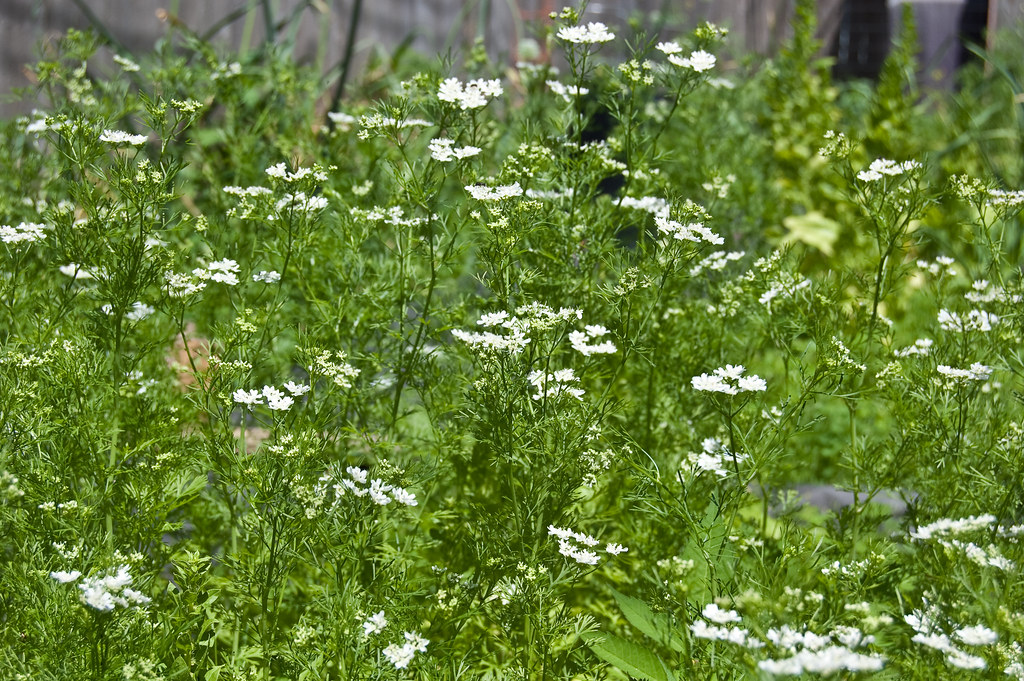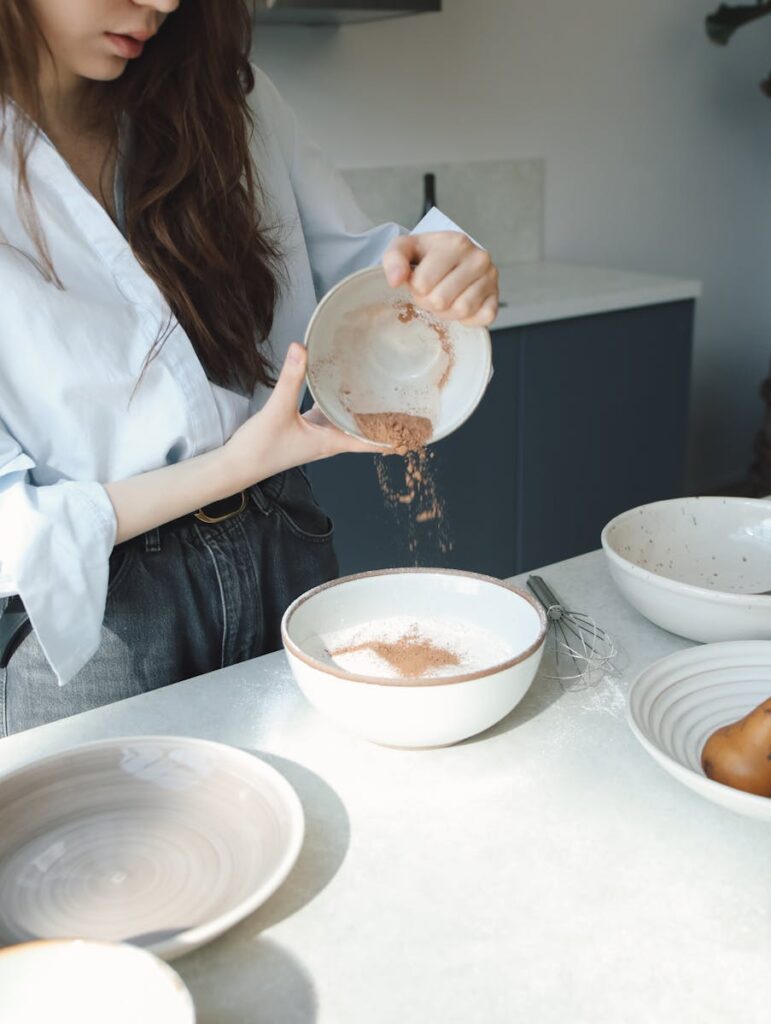Have you ever woken up, the sun shining through your window, a gentle breeze wafting in, carrying the promise of a perfect day for gardening? You stroll out to your herb patch, dreaming of the zesty salsa or the refreshing salad you’ll whip up with your homegrown cilantro, only to find that your once delicate cilantro leaves have been replaced by a towering, thick-stemmed plant. It’s bolted. And while your dreams of the perfect garnish might feel dashed, fear not! This is a tale as old as time for gardeners, and there’s a silver lining to be found in those feathery leaves and flowering stems.
Let’s talk about what bolting really means.
In the world of plants, bolting is akin to a coming-of-age story. It’s when your cilantro decides it’s time to grow up, shifting from its leafy youth into the flowering phase of its life. This process is a natural response to the plant sensing that its time to pass on its genetic legacy is nigh. It’s a botanical rite of passage, where the plant elongates, sending up a flowering stem that will eventually bear seeds for the next generation. In the case of cilantro, those seeds are the spice we know as coriander. So, in a way, bolting is the plant’s way of ensuring its lineage continues, a sort of botanical immortality.
Why is my cilantro bolting? How can I stop it?
These are questions we hear all the time from indoor edible gardening enthusiasts. The truth is, bolting is a classic culinary conundrum that can catch even the most seasoned gardeners off guard. It’s a natural part of your plant’s life cycle, and while it might seem like a setback, it’s simply the plant doing what it’s programmed to do.

The signs of bolting are unmistakable.
You’ll notice a thick central stem, smaller and more deeply lobed leaves that look quite feathery, and perhaps some yellowing of the foliage as the plant reallocates nutrients to support its new reproductive mission. And once you spot these signs, it’s a race against time, as the plant will soon shoot up and focus all its energy on flowering.

Temperature plays a significant role.
Cilantro loves the cool, shying away from the heat. When temperatures start to hover in the 70s, cilantro gets the signal that it’s time to bolt. This is why your best harvests often come when the mercury doesn’t rise above 65-70°F. And while you might come across advice suggesting that cilantro can be grown in temperatures ranging from 50-85°F, it’s not that straightforward. Local growing conditions, especially night temperatures, are crucial. Warm days paired with cool nights can keep your cilantro happy for longer, but in hot climates where nights are just as warm, bolting is all but guaranteed.
Photoperiod, or the length of day, is another factor. As days stretch beyond 12 hours, cilantro sets its sights on flowering. This is why, depending on where you live, you’ll see cilantro bolting at different times. For instance, in Dallas, TX, a 12-hour day occurs around March 16, signaling the plants to start their reproductive phase.
Stress can also push cilantro to bolt. If your plant isn’t getting enough water or light, it might go into survival mode, rushing to produce seeds before it’s too late. Ensuring your cilantro gets plenty of light and the right amount of water and nutrients can help mitigate this trigger, but it’s not a foolproof solution.
Can you stop cilantro from bolting? The answer is no.
When cilantro is ready to bolt, it will, and there’s not much you can do to stop it. It’s not a bad thing; it’s simply nature taking its course. And while you might be tempted to try and delay the inevitable with tricks like shading your plants or using growth regulators, these methods are often more about buying a little extra time than preventing bolting outright.

But what about eating cilantro once it has bolted? If you’re a fan of the herb, you’ll notice a change in flavor as it becomes more bitter. And while cutting off the flower stalk won’t bring back the sweet, tangy leaves you love, it’s not the end of the world. Instead, it’s an opportunity to let your cilantro plants flower, attract pollinators, and eventually harvest coriander seeds, adding a new spice to your culinary arsenal.
Bolting cilantro is a reminder that gardening is about working with nature, not against it. It’s about embracing the lifecycle of your plants and finding joy in each stage, even if it means adjusting your expectations. So, the next time you find your cilantro reaching for the sky, take a moment to appreciate the beauty of its natural progression, and remember that with every bolt comes the promise of new beginnings.
Embracing the lifecycle of cilantro can be a rewarding experience for any gardener, and understanding how to prolong the harvest and handle bolting can turn a potential disappointment into a triumph. Let’s dive into some strategies and tips to help you master the cilantro lifecycle and make the most of your herb garden.
Plant cilantro early due to its preference for cooler temperatures.
By sowing seeds directly into the garden bed four weeks before the average last frost, you give cilantro the cool, soothing environment it craves. This early start takes advantage of the lower temperatures and shorter days, which are less conducive to bolting.
If you’re lucky enough to have a cold frame or low tunnel, you can begin even earlier. Planting cilantro about eight weeks before the last frost can extend your growing season significantly. This head start allows your cilantro to establish itself firmly before the warmer weather sets in, which can trigger the bolting process.
Direct seeding is another tip that can’t be overstated. Cilantro seeds germinate easily and prefer to grow where they are planted, rather than being transplanted as seedlings. By keeping the soil moist and ensuring the seeds are watered once or twice daily, you’ll see sprouts in about a week to ten days.
Choosing the right variety of cilantro can also make a big difference.
Look for seeds that are described as ‘heat tolerant’ or ‘bolt resistant.’ These varieties are specifically bred to withstand warmer temperatures and longer days without bolting as quickly. Varieties like Caribe and Calypso are known for being ‘long-standing’ and ‘slowest to bolt,’ making them excellent choices for gardeners looking to extend their cilantro harvest.
Succession planting can extend cilantro harvest.
By planting new seeds every few weeks, you can ensure a continuous supply of fresh cilantro. As one batch begins to bolt, the next will be coming into its prime. This method requires a bit of planning and space in your garden, but the reward is a steady stream of cilantro for your culinary creations.
While you can’t control the weather, you can manipulate the conditions around your cilantro to some extent. Using shade cloth or planting cilantro in a spot that receives partial shade can help keep the soil and roots cool, which may delay bolting. Similarly, mulching around the plants with a couple of inches of organic material can help maintain cooler soil temperatures and retain moisture.
Watering consistently is crucial, especially during dry spells.
Cilantro that lacks water can become stressed, which may lead to premature bolting. By keeping the soil evenly moist, you reduce the plant’s stress and help it focus on leaf production rather than flowering.
If your cilantro does bolt, it’s not the end of the world. In fact, it’s an opportunity to explore a new dimension of the plant. The flowers of cilantro are attractive to pollinators, and allowing the plant to complete its lifecycle by producing seeds means you can harvest coriander. These seeds can be used in a variety of dishes, adding a new layer of flavor to your cooking.
When harvesting coriander, wait until the seeds turn brown on the plant. Cut the seed heads and place them in a paper bag to catch seeds as they dry and fall off. Once dried, store the coriander seeds in an airtight container and use them to season dishes or plant them next season.

While you can’t stop cilantro from bolting entirely, you can certainly employ strategies to prolong your harvest and make the most of the entire lifecycle of the plant. By planting early, choosing bolt-resistant varieties, succession planting, and creating a favorable environment, you can enjoy cilantro for a more extended period. And when bolting does occur, embrace it as a natural part of the plant’s life and take advantage of the opportunity to harvest coriander seeds. Remember, gardening is a journey, and each stage of a plant’s life offers its own unique beauty and purpose.
Related posts:
How To Keep Cilantro From Bolting, and Can It Be Stopped?
Help! How Do I Keep My Cilantro From Bolting?
Planting Cilantro Seeds: A Growing Guide for a Bountiful Harvest





